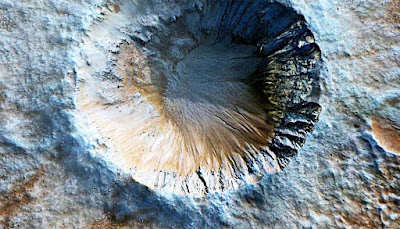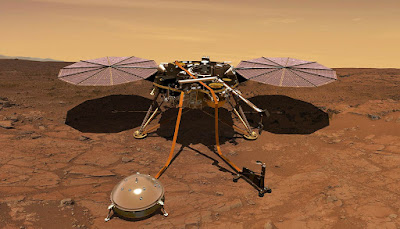‘BLACK BEAUTY’ METEORITE REVEALS WATERY PAST ON MARS
Mars most likely received sprinkle from at the very least 2 greatly various resources very early in its background, inning accordance with new research.
The variability the scientists found suggests that Mars, unlike Planet and the moon, never ever had an sea of magma totally including the planet.
Jessica Barnes, an aide teacher of worldly sciences in the College of Arizona Lunar and Worldly Lab, holds an old, coin-sized mosaic of glass, minerals, and rocks as thick as a hair of woollen fiber. It's a slice of Martian meteorite, known as Northwest Africa 7034 or Black Beauty, that formed when a huge impact sealed with each other various items of Martian crust.
She and her group chemically evaluated the Black Beauty meteorite and the notorious Allan Hillsides 84001 meteorite—controversial in the 1990s for presumably containing Martian microbes—to reconstruct Mars' sprinkle background and worldly beginnings.
judi bola terpercaya karier thiago alcantara
WHERE DID WATER ON MARS COME FROM?
"These 2 various resources of sprinkle in Mars' interior may be informing us something about the kinds of objects that were available to coalesce right into the internal, rough planets," Barnes says. 2 unique planetesimals with greatly various sprinkle components could have collided and never ever fully mixed. "This context is also important for understanding the previous habitability and astrobiology of Mars."
"A great deal of individuals have been attempting to determine Mars' sprinkle background," Barnes says. "Such as, where did sprinkle come from? For the length of time was it in the crust (surface) of Mars? Where did Mars' interior sprinkle come from? What can sprinkle inform us about how Mars formed and evolved?"
Barnes and her group had the ability to item with each other Mars' sprinkle background by looking for hints in 2 kinds, or isotopes, of hydrogen. One hydrogen isotope includes one proton in its nucleus; this is sometimes called "light hydrogen." The various other isotope is called deuterium, which includes a proton and a neutron in the nucleus; this is sometimes described as "hefty hydrogen." The proportion of these 2 hydrogen isotopes indicates to a worldly researcher the processes and feasible beginnings of sprinkle in the rocks, minerals, and glasses where they're found.
For about 20 years, scientists have been tape-taping the isotopic proportions from Martian meteorites, and their information were everywhere. There appeared to be little pattern, Barnes says.
Sprinkle secured Planet rocks is what's called unfractionated, meaning it does not deviate a lot from the standard recommendation worth of sea water—a 1:6,420 proportion of hefty to light hydrogen. Mars' atmosphere, on the various other hand, is greatly fractionated—it is mainly populated by deuterium, or hefty hydrogen, most likely because the solar wind removed the light hydrogen. Dimensions from Martian meteorites—many which were excavated from deep within Mars by impact events—ran the range in between Planet and Mars' atmosphere dimensions.
Barnes' group set bent on investigate the hydrogen isotope structure of the Martian crust particularly by examining examples they understood were come from from the crust: the Black Beauty and Allan Hillsides meteorites. Black Beauty was particularly helpful because it is a mashup of surface material from many various factors in Mars' background.



